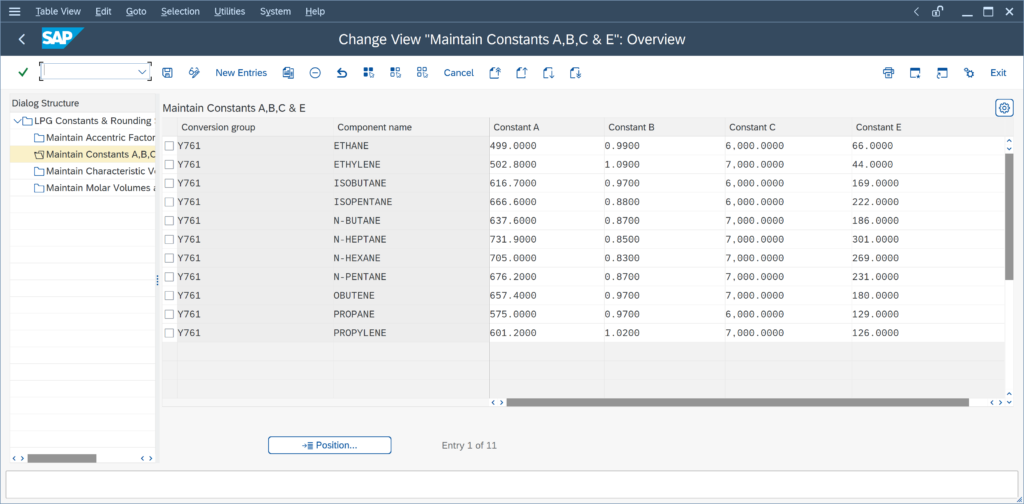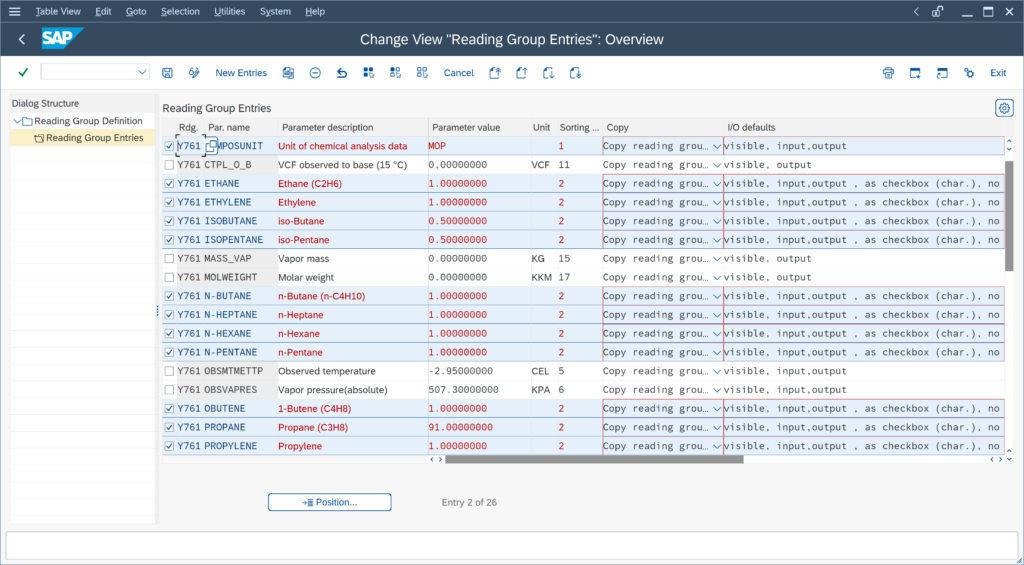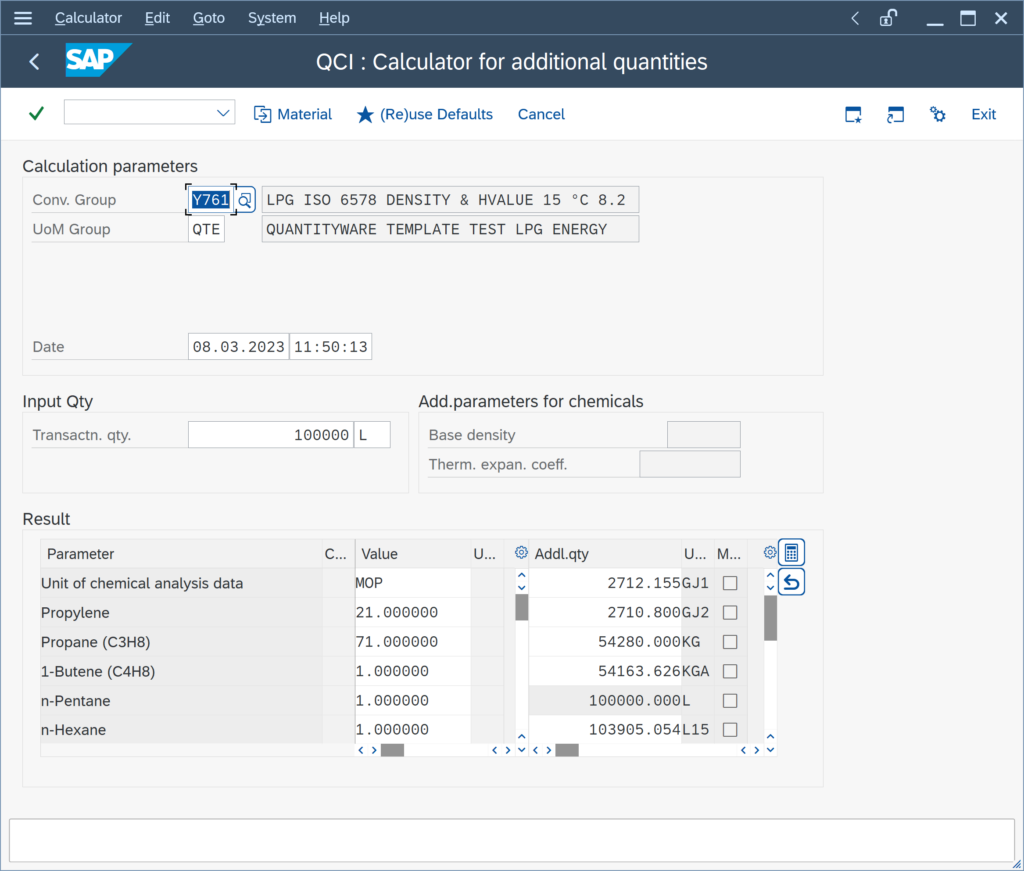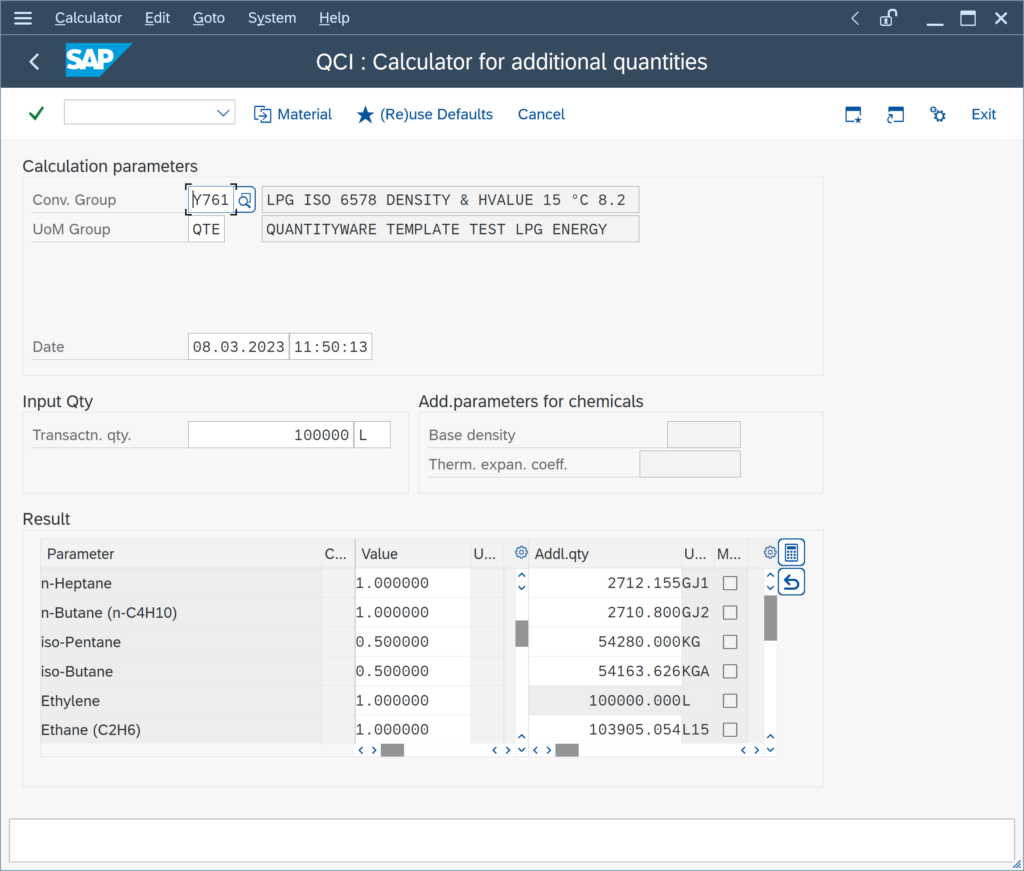Which chemical components can I add to an ISO 6578 LPG reading group?
ISO 6578 provides two density calculation methods for LPG density calculations, based on the known chemical composition of the LPG. Very large factors may have to be applied for the correction of observed density to density at standard temperature, e.g. a correction for the effect of a temperature difference of 60 °C may be necessary for refrigerated propane. Provided that the LPG does not contain more than 20 % of unsaturated hydrocarbons, the correction tables introduced in ISO 91 shall be used for volume corrections. Thus, ISO 6578 is intended for LPG products that contain more than 20 % of unsaturated hydrocarbons (e.g. ethylene, propylene and butylene).
As defined in ISO 6578, the following 11 chemical components may be added to a reading group – (technically defined in ABAP structure /QTYW/MOLCOMP_ISO6578_LPG):

Example:
You copy template conversion group Q761 and reading group Q761 to Y761 and Y761; then you add all supported components to reading group Y761:

Test calculation:


Note:
- The component fractions must be entered such that the sum of the fractions adds up to 1 (mole fractions) or e.g. 100 (if e.g., mole %, mass % or volume % is utilized). Otherwise, and error message is issued
- Other components like e.g. methane, water, hydrogen, hydrogen sulfide etc. cannot be added/utilized for the ISO 6578 density calculations
Categories: BCG & BCP Configuration FAQs | BCS Supported Standards FAQs
Back to FAQs



